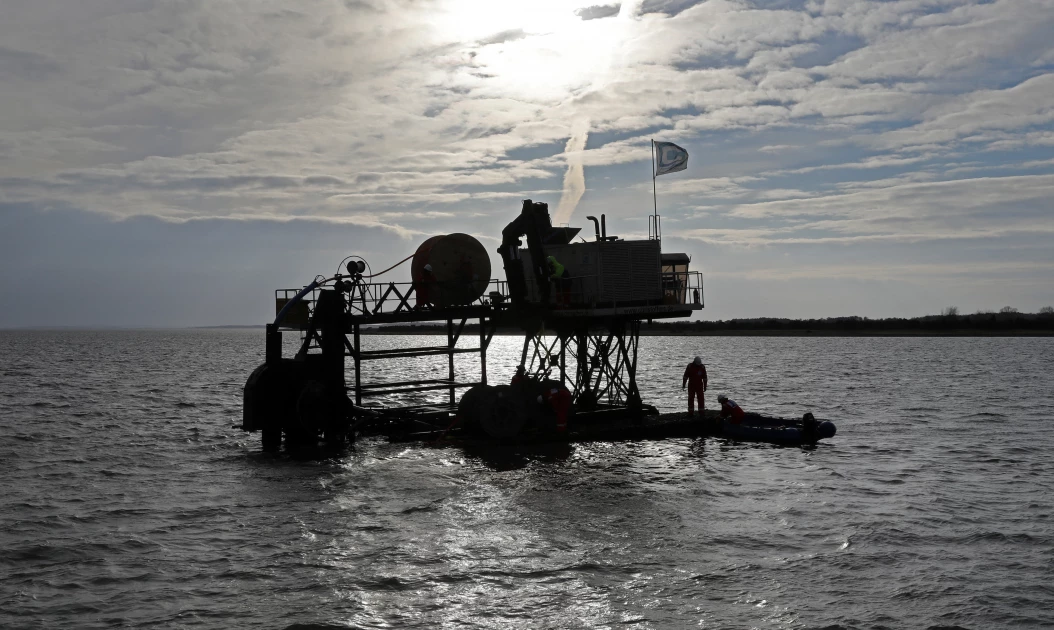What to know about submarine cable cuts behind East Africa internet outage

The submarine cable cutter "Nessie II" is being used between the islands of Rügen and Hiddensee to lay empty pipes 1.80 to 3.50 deep in the seabed for the broadband connection to Hiddensee.(Photo by BERND WUSTNECK / dpa-Zentralbild / dpa Picture-Alliance via AFP)

Audio By Vocalize
Since Sunday, slow internet speeds have
been experienced in East and South Africa after damages to major subsea cables
supplying broadband across the continent through the Red Sea.
Users of both fibre and mobile broadband
are confronting outages and while there is little information on the nature
of the damage or its cause, internet service providers (ISPs) servicing the
East African region say they are working to minimise interruption as they await
the full restoration of the cables.
It is reported that the damage has affected
at least two of the major subsea gateways which supply connectivity to telecommunications
networks in the East and Southern Africa regions.
Subsea or submarine communications cables are cables laid on the sea and ocean bed that use fibre-optic technology to
transmit data such as telephone and internet traffic to provide telecommunications links across the world's continents.
Unlike satellite technology, which transmits communication signals to points that are not wired, subsea cables are tucked down in the water using special cable layer ships.
Nearer to the shore, they are buried under the beach for protection.
These cables are therefore the main force
powering internet connectivity across the world’s continents and their damage can
cause widespread internet outages.
The U.S. telecoms market research company TeleGeography
estimates that there are over 570 undersea cables around the world as of early
2024, and it is reported that submarine cables account for 90 per cent of Africa’s
internet needs.
Almost all of the subsea cables servicing
the world are privately owned by telecom operators or investors.
Many of them are funded by internet giants
such as Google, Meta, Microsoft, and Amazon, according to a 2016 report by TeleGeography.
For the current outage being experienced in
East Africa, it is said there are three cuts in three of the submarine cables powering
the region’s connectivity, while another cable system is faulty.
Ben Roberts, the Group Chief Technology and
Innovation Officer for Liquid Telecom on Sunday reported faults in the Eastern
Africa Submarine Cable System (EASSy) and the Seacom cables.
EASSy is a 10,000-kilometre submarine cable
system along the east and south coasts of Africa.
It is one of the highest-capacity systems
serving the continent, linking South Africa with Sudan through landing points in
Mozambique, Madagascar, the Comoros, Tanzania, Kenya, Somalia and Djibouti.
The South Africa-based Seacom, Africa's
first broadband submarine cable system, meanwhile runs along the continent's
Southern coasts.
It is a 17,000-kilometre cable providing
Djibouti, Kenya, Tanzania, Mozambique, and South Africa with connectivity.
Roberts on Sunday pointed out that two
other key submarine cables in the Red Sea; the Europe India Gateway (EIG) and the
Asia-Africa-Europe 1 (AAE-1), also had unrepaired cuts.
The 15,000-kilometre EIG links the U.K., Portugal, Gibraltar, Monaco, France, Libya, Egypt, Saudi Arabia, Djibouti, Oman, United Arab Emirates, and India, while the AAE-1 connects Southeast Asia to Europe via Egypt, over a 25,000-kilometre distance.
In most cases, large telecom companies and
ISPs rely on multiple cable systems so that if one experiences issues, they
can reroute traffic to ensure uninterrupted service.
Kenya’s Communications Authority says there
was a deep-sea fibre cut at the Mtunzini teleport station in South Africa,
affecting the Seacom and EASSy subsea cable channels.
CA on Monday said it is closely monitoring
the situation to ensure incoming and outbound internet connectivity while also
directing service providers to secure alternative routes for their traffic.
"The East Africa Marine System (TEAMS) cable, which has not been affected by the cut, is currently being utilized for local traffic flow while redundancy on the South Africa route has been activated to minimize the impact," it added.
Submarine cable faults have previously been
attributed to human activities like fishing and harbouring in shallow waters
near the seashore, as well as natural hazards such as earthquakes and landslides.
In March, a suspected underwater rock slid off the coast of Cote d’Ivoire, interrupting several submarine
cables serving the West African region.
In February 2012, three submarine cables
were cut in the Red Sea due to a ship dragging its anchor.
Other factors such as the firing of
missiles, especially in the Red Sea with the ongoing war in Yemen, have been reported
to contribute to submarine cable damages.
The Yemeni government has accused Houthi
rebels of targeting the subsea cables in the Red Sea, something the rebels
have denied.
The Houthis instead blame British and US
military units operating in the area for the damage.


Leave a Comment